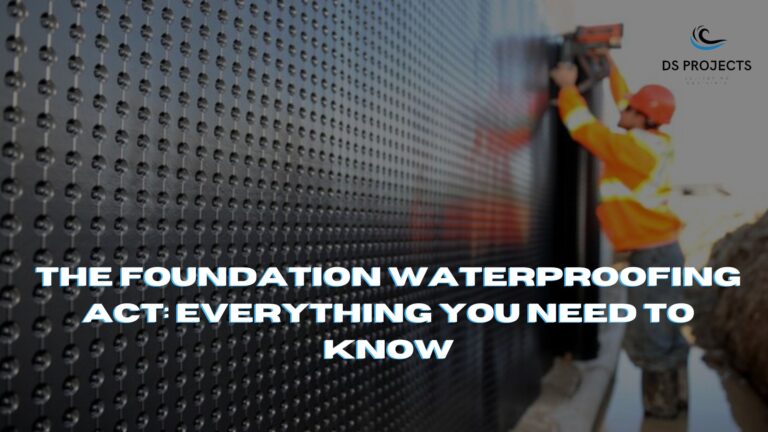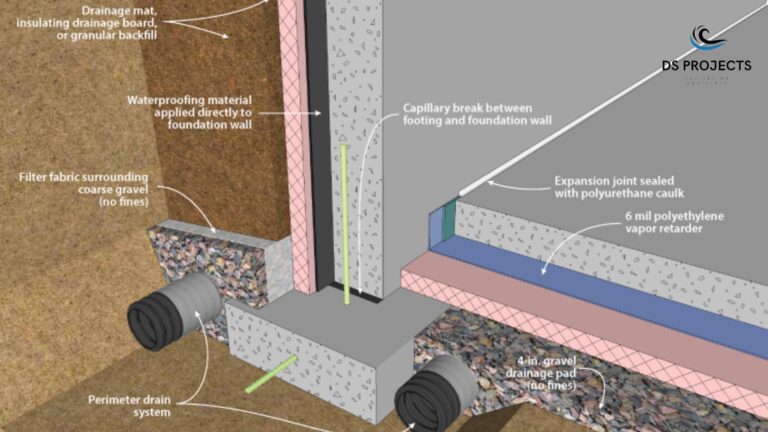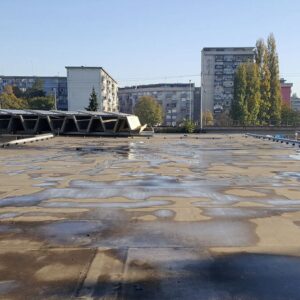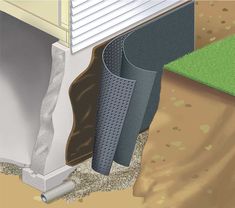
Key takeaways:
- Protect your building from water damage and structural issues by implementing effective foundation waterproofing techniques.
- Understand the regulatory requirements outlined in the Foundation Waterproofing to ensure compliance and long-term protection for your property.
- Prevent health hazards, enhance property value, and maintain structural integrity by investing in foundation waterproofing. It’s not just about compliance; it’s about safeguarding your investment for the future.
The Foundation Waterproofing: Everything You Need to Know
Waterproofing foundations is essential to prevent water damage and building issues. Although there are no specific Australian standards for below-ground waterproofing, many use the British Standard BS 8102:2009 as a guide. Choosing the right waterproofing system based on the structure’s type and use is important, aiming for either minimal seepage or complete dryness.
Common waterproofing methods include membranes, drainage systems, and liquid-applied membranes unlike damp proofing, which is a short-term fix, waterproofing offers long-term protection. Effective waterproofing includes interior and exterior systems to keep water out and ensure proper drainage. This comprehensive approach is crucial for maintaining dry and safe foundations.
Historical Background
Origins and Development of the Act
The Foundation Waterproofing Act was introduced to address the increasing issues related to water damage in residential and commercial buildings. Before the Act, many structures suffered from inadequate waterproofing, leading to costly repairs and health hazards like mold growth. The Act was developed by a coalition of industry experts, government officials, and building professionals who recognized the need for standardized waterproofing practices. Their goal was to protect property owners and enhance building safety.
Key Milestones and Amendments
Initial Legislation: The Act was first passed in 1995, marking a significant step towards standardized waterproofing requirements.
First Amendment: In 2003, the Act was amended to include more specific guidelines for different types of buildings, including residential, commercial, and industrial structures.
Introduction of Compliance Checks: In 2010, a system for regular inspections and compliance checks was introduced to ensure ongoing adherence to the Act’s provisions.
Latest Amendment: The most recent amendment in 2023 incorporated advancements in waterproofing technology, allowing for modern materials and methods to be used in compliance with the Act.
These milestones reflect the Act’s evolution and its responsiveness to the growing understanding and technological advancements in foundation waterproofing. By keeping up with these changes, the Act continues to provide a robust framework for protecting buildings from water damage.
Key Provisions of the Foundation Waterproofing

Scope and Applicability
The Foundation Waterproofing Act applies to a wide range of structures, including residential homes, commercial buildings, and industrial facilities. It covers all new constructions and major renovations where foundation work is involved. The Act is designed to ensure that all relevant structures are adequately protected from water intrusion, regardless of their size or purpose.
Regulatory Requirements
The Act sets forth specific requirements for foundation waterproofing, including:
Materials: Only approved waterproofing materials that meet established standards can be used.
Methods: Detailed guidelines on the application techniques for both interior and exterior waterproofing.
Design Standards: Requirements for proper drainage systems, vapor barriers, and insulation to prevent water penetration.
Inspection Protocols: Regular inspections are mandated to ensure compliance with the waterproofing standards.
Compliance and Enforcement
To ensure adherence to the Act, a robust system of compliance and enforcement has been established:
Inspections: Regular and random inspections are conducted by certified professionals to verify compliance with the Act’s provisions.
Penalties: Non-compliance can result in significant penalties, including fines and mandatory corrective actions.
Certification: Builders and contractors must obtain certification demonstrating their understanding and ability to comply with the Act.
Reporting: Property owners and managers are required to maintain records of waterproofing work and inspections, which must be available for review by authorities.
By outlining clear guidelines and enforcement mechanisms, the Foundation Waterproofing Act aims to protect properties from water damage and ensure long-term structural integrity.
Benefits of Foundation Waterproofing
Protecting Structural Integrity
Effective foundation waterproofing helps maintain the structural integrity of buildings by:
Preventing Cracks and Settlement: By keeping moisture out, waterproofing reduces the risk of soil expansion and contraction which can lead to foundation cracks and settlement.
Minimizing Concrete Degradation: Water infiltration can weaken concrete over time, but waterproofing helps preserve its strength and durability.
Preventing Mold and Mildew Growth: Moisture accumulation can promote mold and mildew growth, which can compromise the integrity of building materials. Waterproofing helps mitigate this risk, preserving the structural integrity of the building.


Preventing Health Hazards
Foundation waterproofing contributes to a healthier indoor environment by:
Reducing Mold and Mildew: Mold and mildew growth can trigger respiratory issues and allergies. By keeping moisture out, waterproofing helps maintain indoor air quality.
Preventing Pest Infestations: Damp environments attract pests like termites and cockroaches, which can pose health risks. Waterproofing creates a less hospitable environment for these pests, reducing the likelihood of infestations.
Eliminating Standing Water: Standing water can become a breeding ground for bacteria and parasites, posing health hazards to occupants. Waterproofing prevents water accumulation, reducing this risk.
Enhancing Property Value
Investing in foundation waterproofing can increase the value of your property by:
Protecting Investment: Waterproofing safeguards your property against water damage, preserving its condition and appearance. Potential buyers are more likely to pay a premium for a well-maintained, water-resistant property.
Reducing Maintenance Costs: Waterproofing helps minimize the need for costly repairs due to water damage, saving you money in the long run.
Improving Curb Appeal: A dry, well-maintained foundation enhances the overall aesthetic appeal of your property, making it more attractive to potential buyers.
By understanding the benefits of foundation waterproofing, property owners can make informed decisions to protect their investments and ensure the long-term health and value of their buildings.
Techniques and Best Practices
Interior Waterproofing Methods
Interior waterproofing methods focus on managing water that has already entered a structure. Key techniques include:
- Sealants and Coatings: Applying waterproof sealants and coatings to interior walls and floors to block moisture.
- Drainage Systems: Installing interior drainage systems such as French drains or sump pumps to collect and redirect water away from the foundation.
- Vapor Barriers: Using vapor barriers to prevent moisture from passing through walls and floors, reducing humidity levels within the building.
Exterior Waterproofing Methods
Exterior waterproofing aims to prevent water from entering the structure in the first place. Effective methods include:
- Excavation and Membranes: Digging around the foundation and applying waterproof membranes to the exterior walls to create a barrier against water.
- Drainage Systems: Installing exterior drainage systems, like perimeter drains, to direct water away from the foundation.
- Soil Grading: Ensuring proper grading of soil around the building to slope away from the foundation, reducing water accumulation near the base.
Advanced Technologies in Waterproofing
Recent advancements in waterproofing technology have led to more effective and durable solutions. These include:
- Crystalline Waterproofing: This technology involves applying a crystalline compound that penetrates concrete and forms crystals to block water pathways.
- Liquid Rubber Membranes: Highly flexible and durable, these membranes can be applied seamlessly to protect against water infiltration.
- Smart Waterproofing Systems: Integrated systems that use sensors and automated pumps to monitor and manage water levels, ensuring proactive protection against water damage.
By implementing these techniques and leveraging advanced technologies, property owners can significantly enhance the effectiveness of their foundation waterproofing efforts, ensuring long-term protection and peace of mind.
Conclusion
Foundation waterproofing is essential for protecting buildings from water damage. The Foundation Waterproofing Act sets standards to ensure proper waterproofing in various structures. It covers regulatory requirements, compliance, and enforcement measures. Effective waterproofing methods, both interior and exterior, prevent structural damage and health hazards while enhancing property value.
By adhering to the Act and implementing advanced waterproofing techniques, property owners can safeguard their investments and ensure long-term stability. Remember, a solid foundation is key to the longevity of any building.
Author
-

Brad has over 25 years experience in the residential and commercial construction and drives the preparation and quality of the projects that DS Projects are known for. The model of our business is forming long lasting and mutually rewarding relationships with our clients, teams, suppliers and alliance partners.
View all posts



